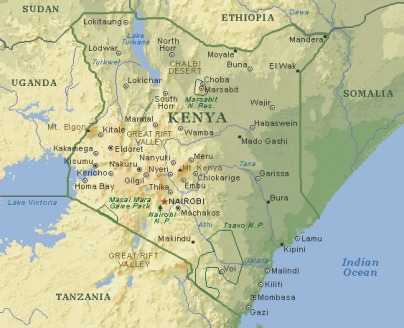
In the August of 2006, disagreements over land that have persisted for over 40 years came to head when the Sabaot Land Defense Force (SLDF) rebel militia took up arms in a violent conflict over a government land allocation scheme it had deemed unfair. Trapping residents between the firefights, the SLDF and the Kenyan militia left approximately 66,816 people (11,136 families) homeless. Over two years later, the clashes are as violent as ever and the number of displaced people still remains high at 45,720 people (7,620 families). The 20,000 that are not accounted for are largely in hiding with relatives and rental houses, cramming as many as five families in a one-room house, or have fled up the mountain to seek refuge in the forest or in isolated villages. Hundreds of others have been forcibly taken from their homes by militia forces on both sides. Some of them are found weeks later either mutilated or killed, others forced into serving the militias after death threats against their families, and many are simply never seen again. With such cramped quarters and unsanitary conditions, infant mortality and disease has skyrocketed with a majority of those suffering people dying from treatable causes such as pneumonia and malnutrition. Of these deaths, two-thirds are children.
Although the numbers of internally displaced people have seemingly dropped, the current number is expected to rise due to the escalation of clashes in recent months. Tension has gripped the area as both state and rebel forces belligerently break up any organized camping by the displaced people due to the paranoia that these villagers are siding with the enemy, making it very difficult for the families to cope with their situation. With so many people displaced at once, health facilities have been strained beyond their capacity and many health workers have abandoned their duties for fear of being attacked. The few who stay work around the clock to tend to patients who are victims of disease, malnutrition, or the indiscriminate violence that has run rampant in the area. With such strained facilities and an underwhelming number of doctors and healthcare workers in the area, most of the people of Mount Elgon have been unable to access any healthcare, consequently resulting in a significant rise in HIV and TB infection rates in the region.
However, all is not lost. Progress has been made. Doctors, nurses, and students from around the world have come to a country where only 4.5% of the nation’s GDP (a mere 2.6 billion US dollars) is spent annually on healthcare. This comes down to $68 per person, with almost all of it being used in major cities and none in regions like Mount Elgon. Compared to the US, where the average person receives $7,439 in healthcare (or 2.26 trillion US dollars for the entire nation), it becomes clear how much the people caught in Mount Elgon need our help. For a nation where nearly a quarter of its population lives on less than $1 a day, it makes sense that the villagers can’t help but leave issues dealing with HIV, general healthcare, and the well being of their children go largely unchecked.
Although the numbers of internally displaced people have seemingly dropped, the current number is expected to rise due to the escalation of clashes in recent months. Tension has gripped the area as both state and rebel forces belligerently break up any organized camping by the displaced people due to the paranoia that these villagers are siding with the enemy, making it very difficult for the families to cope with their situation. With so many people displaced at once, health facilities have been strained beyond their capacity and many health workers have abandoned their duties for fear of being attacked. The few who stay work around the clock to tend to patients who are victims of disease, malnutrition, or the indiscriminate violence that has run rampant in the area. With such strained facilities and an underwhelming number of doctors and healthcare workers in the area, most of the people of Mount Elgon have been unable to access any healthcare, consequently resulting in a significant rise in HIV and TB infection rates in the region.
However, all is not lost. Progress has been made. Doctors, nurses, and students from around the world have come to a country where only 4.5% of the nation’s GDP (a mere 2.6 billion US dollars) is spent annually on healthcare. This comes down to $68 per person, with almost all of it being used in major cities and none in regions like Mount Elgon. Compared to the US, where the average person receives $7,439 in healthcare (or 2.26 trillion US dollars for the entire nation), it becomes clear how much the people caught in Mount Elgon need our help. For a nation where nearly a quarter of its population lives on less than $1 a day, it makes sense that the villagers can’t help but leave issues dealing with HIV, general healthcare, and the well being of their children go largely unchecked.
